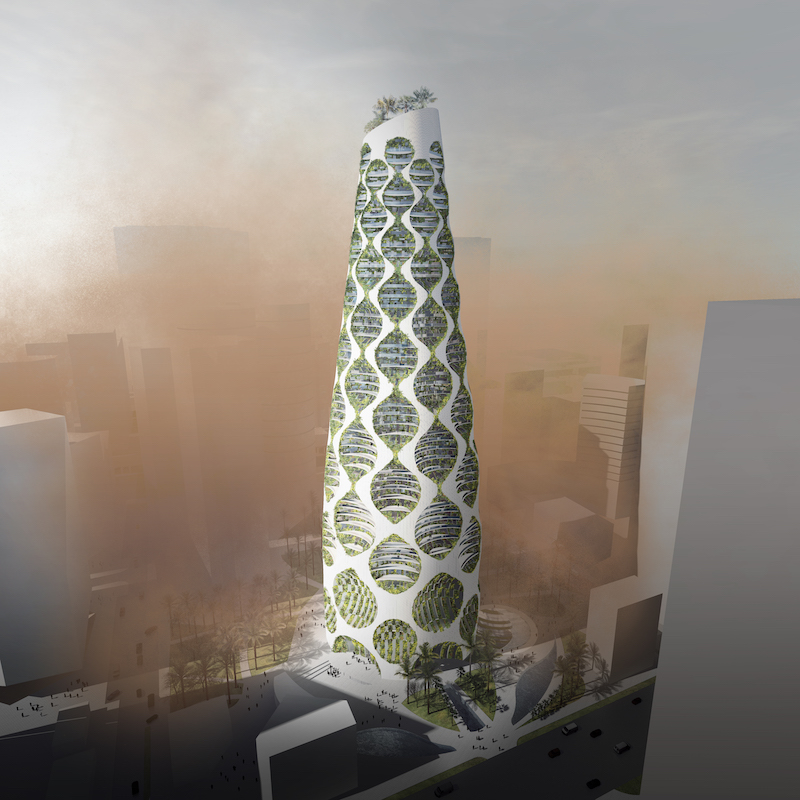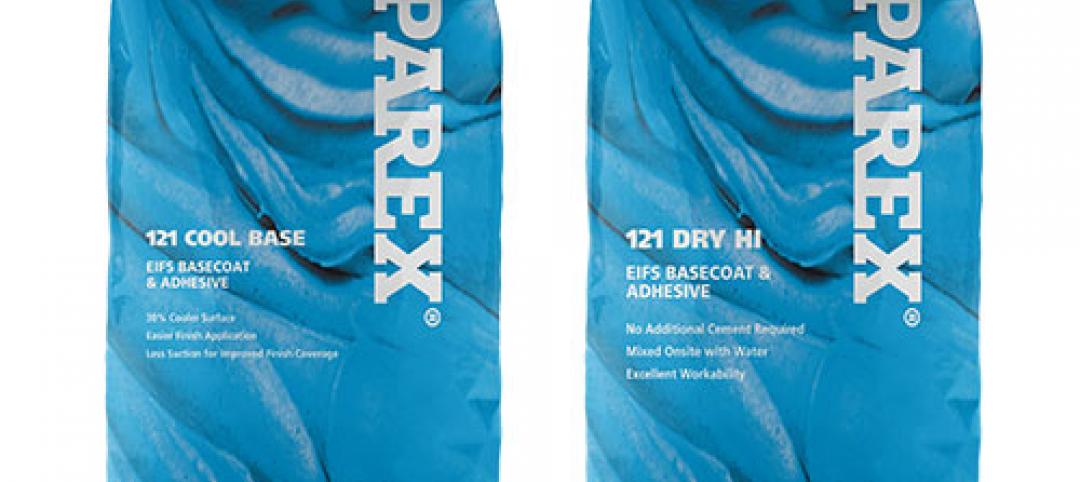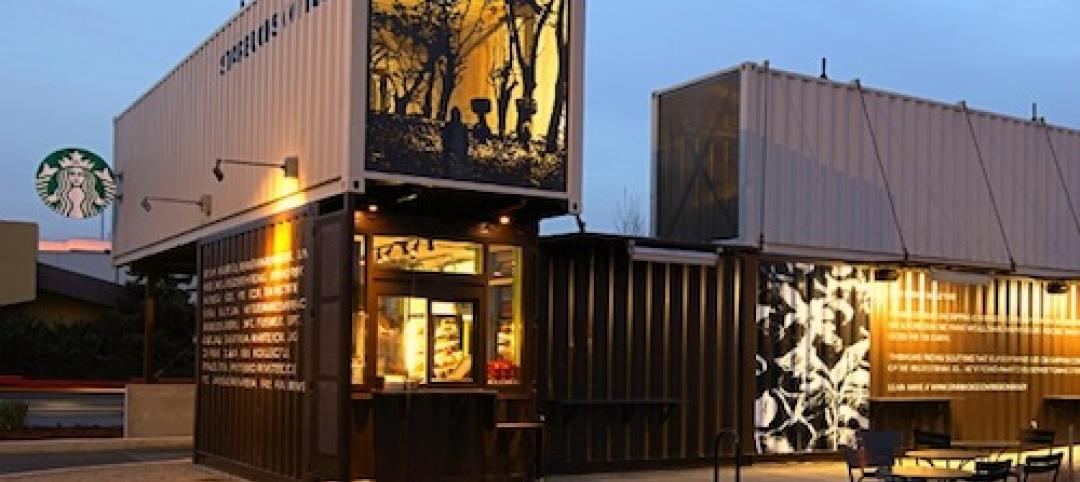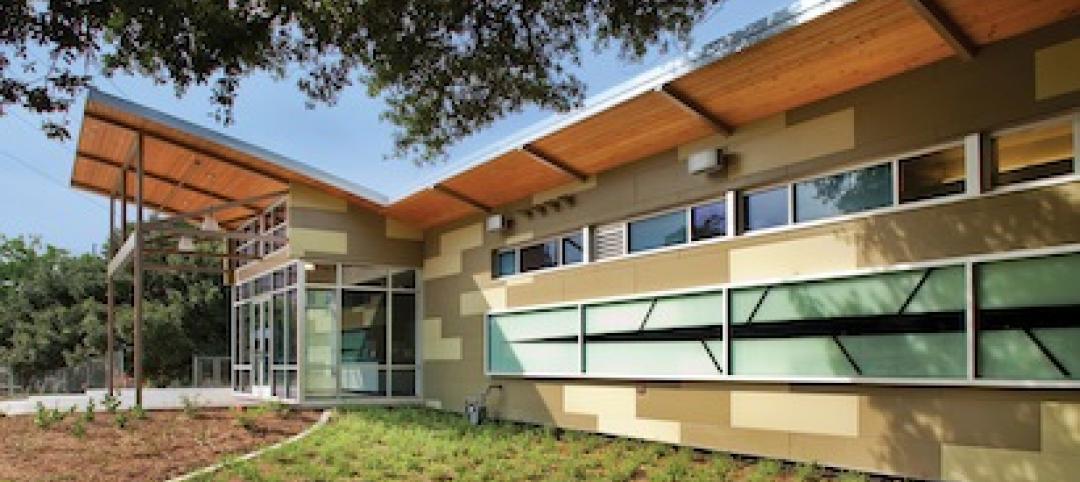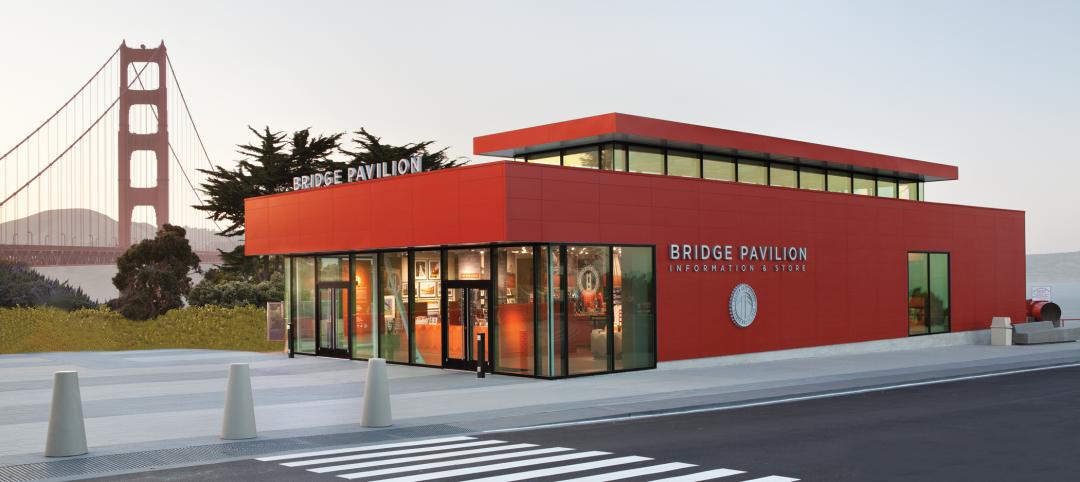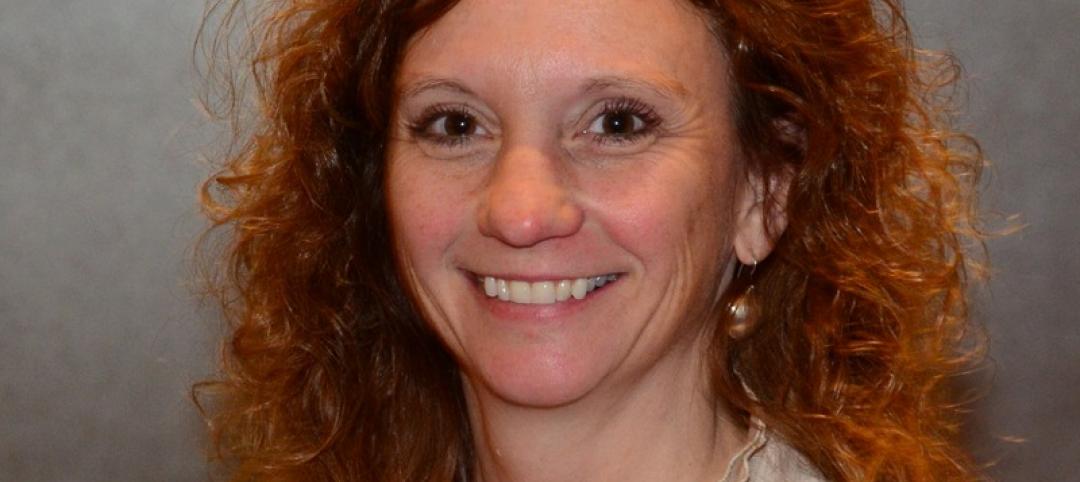FAAB Architecture, a Poland-based design firm, has presented to investor groups in Sweden and Qatar a mixed-use building concept whose facade integrates energy-generating exterior panels with matrices of plants and microorganisms, to create a “vertical oasis system” (VOS) that reduces the building’s energy consumption, improves the building’s exterior and interior air quality, contributes to biodiversity, and produces energy that can sold to surrounding buildings.
This concept is one of the more elaborate examples of building designs that incorporate exterior vegetation, which while relatively uncommon in the U.S. has attracted some interest from developers and their AEC partners as part of their energy efficiency and wellness strategies.
“We’re all trying to figure out how to create net-zero or net-negative buildings, and inevitably, plants need to be part of that effort,” says Christiana Moss, FAIA, NCARB, Principal and Managing Partner with Studio Ma in Phoenix.
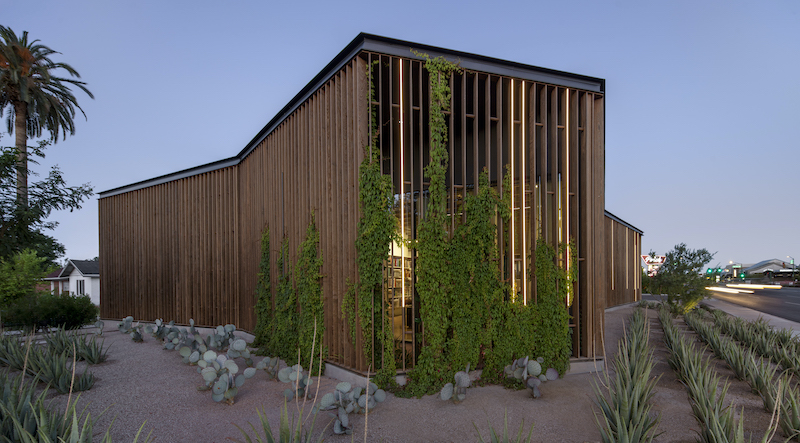
Studio Ma's office in Phoenix includes an exterior screen wall that's shaded by ground-to-rooftop plants. Image: Studio Ma
About a year ago, the firm moved into its new offices in the Soronan Desert near Phoenix. This net-zero building, dubbed Xero Studio, is distinguished by its regenerative, bioclimate design, which includes an exterior screen wall façade made from kebonized wood that reduces heat gain and glare. Plants that extend from the ground along the exterior walls to the top of the building form a buffer zone that provides rare shading and reduces the load on the building’s HVAC equipment.
Moss adds that vegetative walls, both exterior and interior, act as carbon captures and air purifiers. “This is where we have to go as design professionals,” she says.
FAAB has been exploring the possibilities of exterior vegetation for a few decades. Its founder and co-owner, Adam Bialobrzeski, says he got his first glimpse of plant-enhanced facades in Paris, which led him to ponder whether this could be a solution for clients with building projects in more severe climates.
In 2009, FAAB entered a competition for the restoration of the pre-World War II-era former multifamily residential building that would be converted into new headquarters for the Foundation for Polish Science. Bialobrzeski thought this would be a good project to try out a “vertical garden” as part of this four-story building’s rehabilitation. The Foundation’s old headquarters had been covered by ivy, and that was one reason for FAAB’s design to introduce “way more plants” to the restoration project, says Bialobrzeski. In addition, some of these plants would bloom, so the exterior of the building would “change” during the seasons.
FAAB won this competition, and the project was completed in 2013. The restoration was “complicated,” says Bialobrzeski, but maintaining the exterior vegetation has been “easy,” through a system of pipes that runs through the building’s walls to provide water and fertilization. Water flows down the building, and any excess is recaptured at the base and reused.
The Foundation for Polish Science headquarters project was a stepping-stone for the development of FAAB’s more ambitious Vertical Oasis System. The concept it has presented to investors envisions a 220-meter-tall building with 53 above-ground and four below-ground floors for office, retail, residential, and hotel space. The concept has 123,170 sm of surface space and a total area of 181,975 sm.
The building’s façade is comprised of components, prefabricated by Poland-based WCC. The white opaque parts of the facade are made of BIPV (building-integrated photovoltaics) active panels, while the glazing utilizes CLEARVIEW POWER technology provided by Ubiquitous Technology. Both parts would harvest power from the sun.
The façade’s vertical garden, located within groups of terraces, is integrated into the multifunctional Vertical Oasis System modular panels. A combination of carefully selected plants and microorganisms works in tandem with building systems to help purify the air from various pollutants.
Bialobrzeski notes that the vertical garden for this concept is completely different from the Polish Science headquarters in the way plant life is used. “We saw that a vegetative façade doesn’t necessarily need to be just for the visual,” he says
The building’s “green skin” is meant to be paired with a mobile app that reads sensor data to provide the status of the system and each plant in the matrix. The end user will be able to monitor the system that, supported by AI and machine learning, can improve itself. And as the system “reinvents” itself, the building’s occupants can modify the plant matrix.
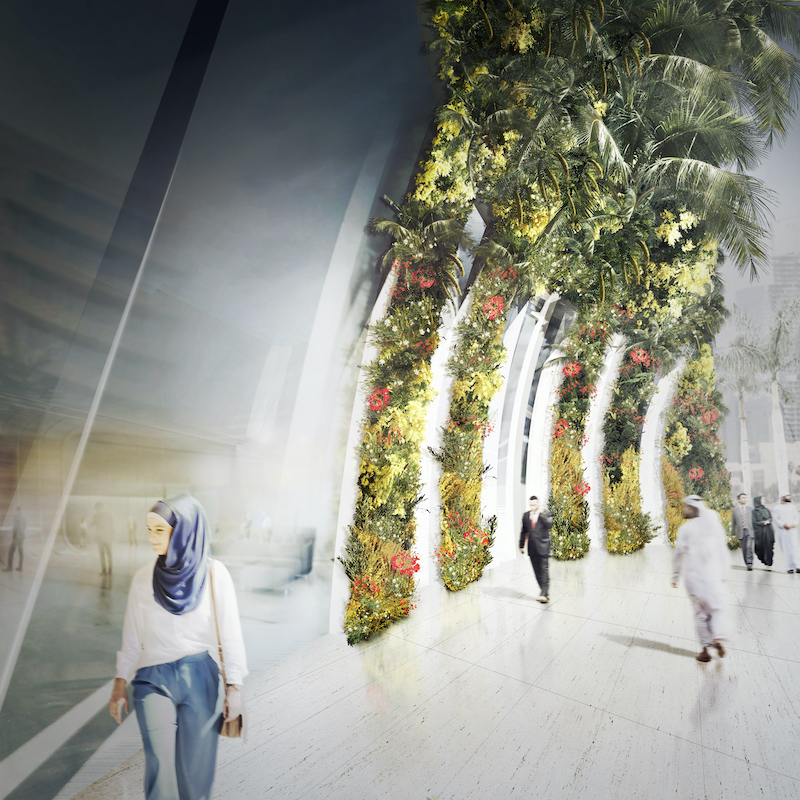
The facade's components include matrices of plants that help purify the exterior and interior air of the building, and provide a thermal component as well. Images: FAAB
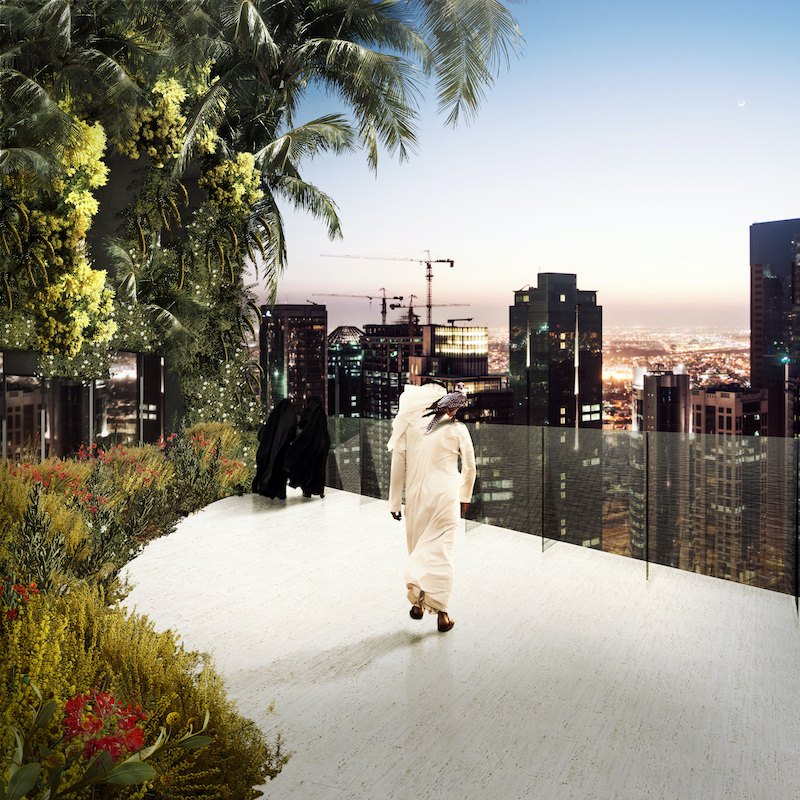
The natural process of transpiration helps to humidify and cool the air. The structure of chosen plants helps to reduce noise pollution through absorption and deflection as well as sound wave refraction. This “green skin” is also the vital element of stormwater management, both within the site and for the area surrounding the building. Depending on the location of the site, the façade might exclude the need to connect the building to local rainwater networks.
FAAB believes its façade can withstand harsh weather conditions. The matrix of plants and microorganisms would be specified depending on the building’s location. The skin reduces the demand of the building for cold air up to 66% (calculated for the Arabian Gulf region), and for heat by 30% (calculated for Sweden).
The Vertical Oasis System is meant to be paired with a mobile app that can provide real-time information about the facade's performance. Image: FAAB
Bialobrzeski says modules are customizable for specific client needs, and that the irrigation system is built into the modules. The type and number of plants used would be determined by the surface area being covered and by need; for example, some developers might want plants installed to reduce site-specific air pollution.
FAAB sees VOS as a proof of concept that the firm can present around the world. This kind of active solution, says Bialobrzeski, coupled with technology and the Internet, could be the answer cities are looking to alter their ecosystems for the better. “Think about the multiplication of these kinds of buildings in a city,” he says.
Related Stories
| Feb 28, 2013
Parex introduces cooler and stronger EIFS basecoats and adhesives
Parex USA, Inc., the parent company of leading building material brands; Parex, Teifs, LaHabra, El Rey, and Merkrete, unveils two new Parex EIFS basecoats & adhesives – 121 Cool Base and 121 Dry HI (High Impact).
| Feb 22, 2013
Starbucks pilot program rolls out small, modular stores
Coffee giant Starbucks is rolling out mini-stores with maximum local flavor, as part of an international pilot program.
| Oct 24, 2012
Loma Linda University Medical Center lets light in with metal wall systems
Designers for the building aimed to create a positive environment for patients and visitors, and wanted to let in as much natural daylight as possible.
| Oct 22, 2012
Nichiha USA to unveil corporate rebranding with remodeled website
Nichiha USA, a manufacturer of fiber cement siding and cladding, will launch its new corporate identity Nov. 1 with the debut of a redesigned website.
| Oct 9, 2012
Texas Goes Bigger with High-Profile Community Rowing House
Community rowing club chooses sustainable cladding for its modern rowing house
| Jun 22, 2012
Golden Gate Bridge Celebrates 75 Years With the Opening of New Bridge Pavilion
With features such as Nichiha's Illumination series panels, super-insulating glass units, and LED lighting, the new Golden Gate Bridge Pavilion not only boasts the bridge's famous international orange, but green sustainability as well
| Jun 8, 2012
Allsteel names Kris Yates to head architectural products group
Yates is responsible for the start up, launch and ongoing sales and marketing of Allsteel’s new Beyond movable walls.
| Jun 1, 2012
New BD+C University Course on Insulated Metal Panels available
By completing this course, you earn 1.0 HSW/SD AIA Learning Units.


